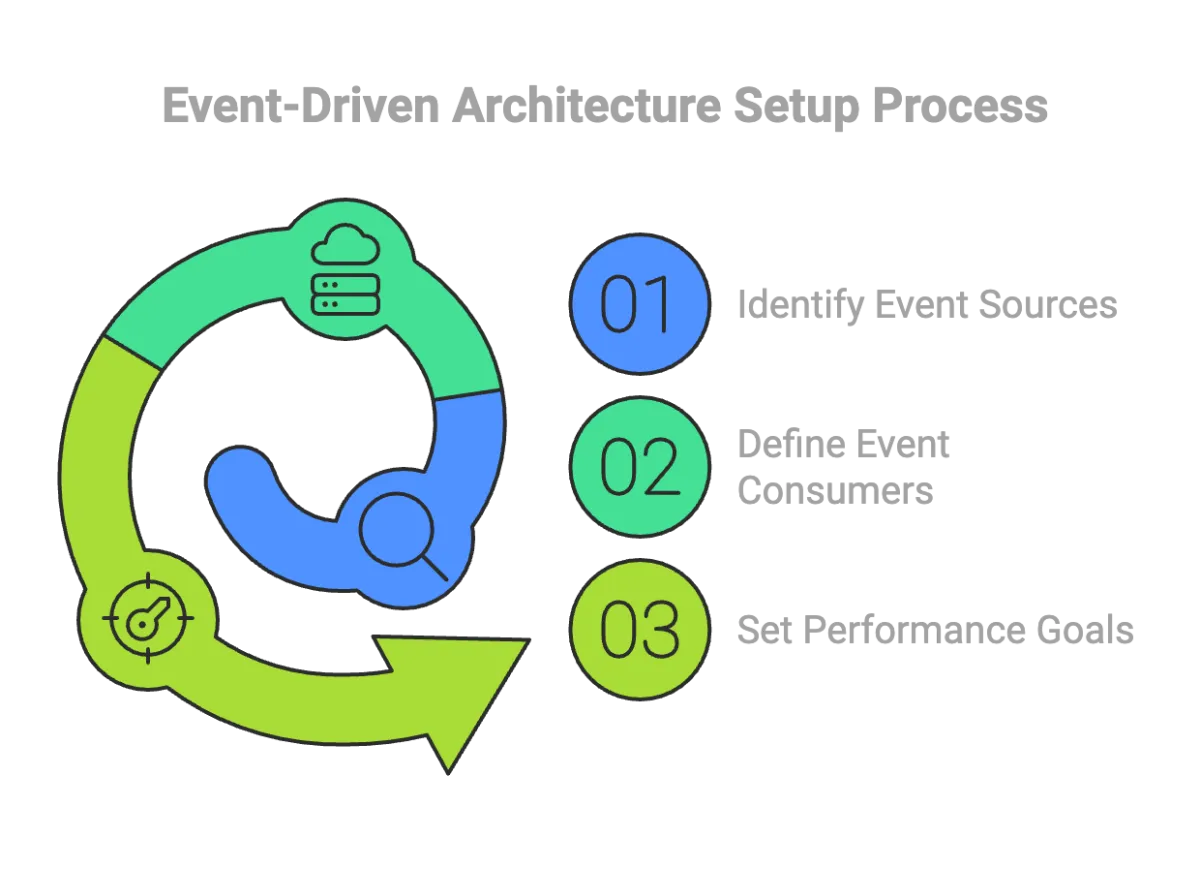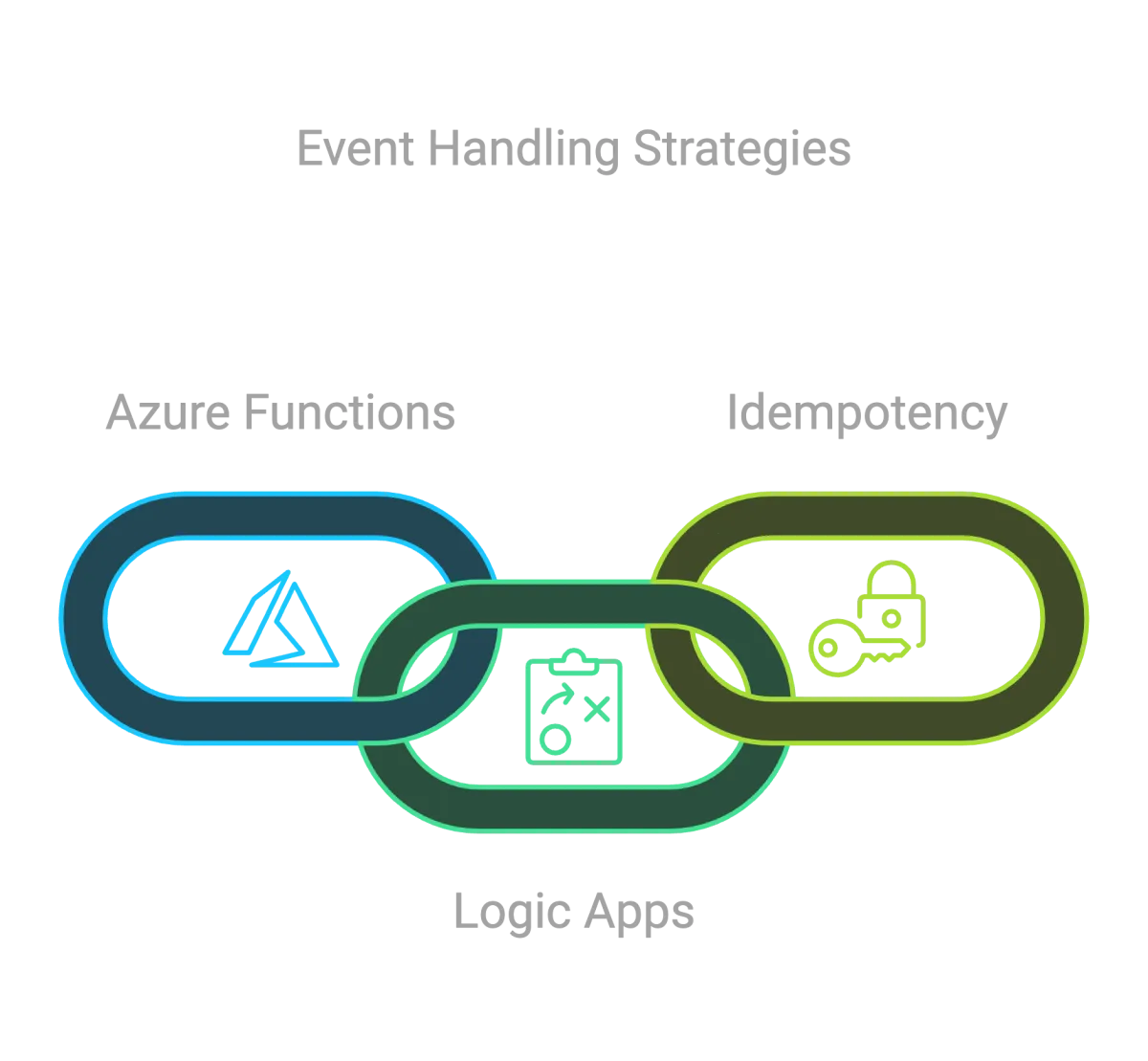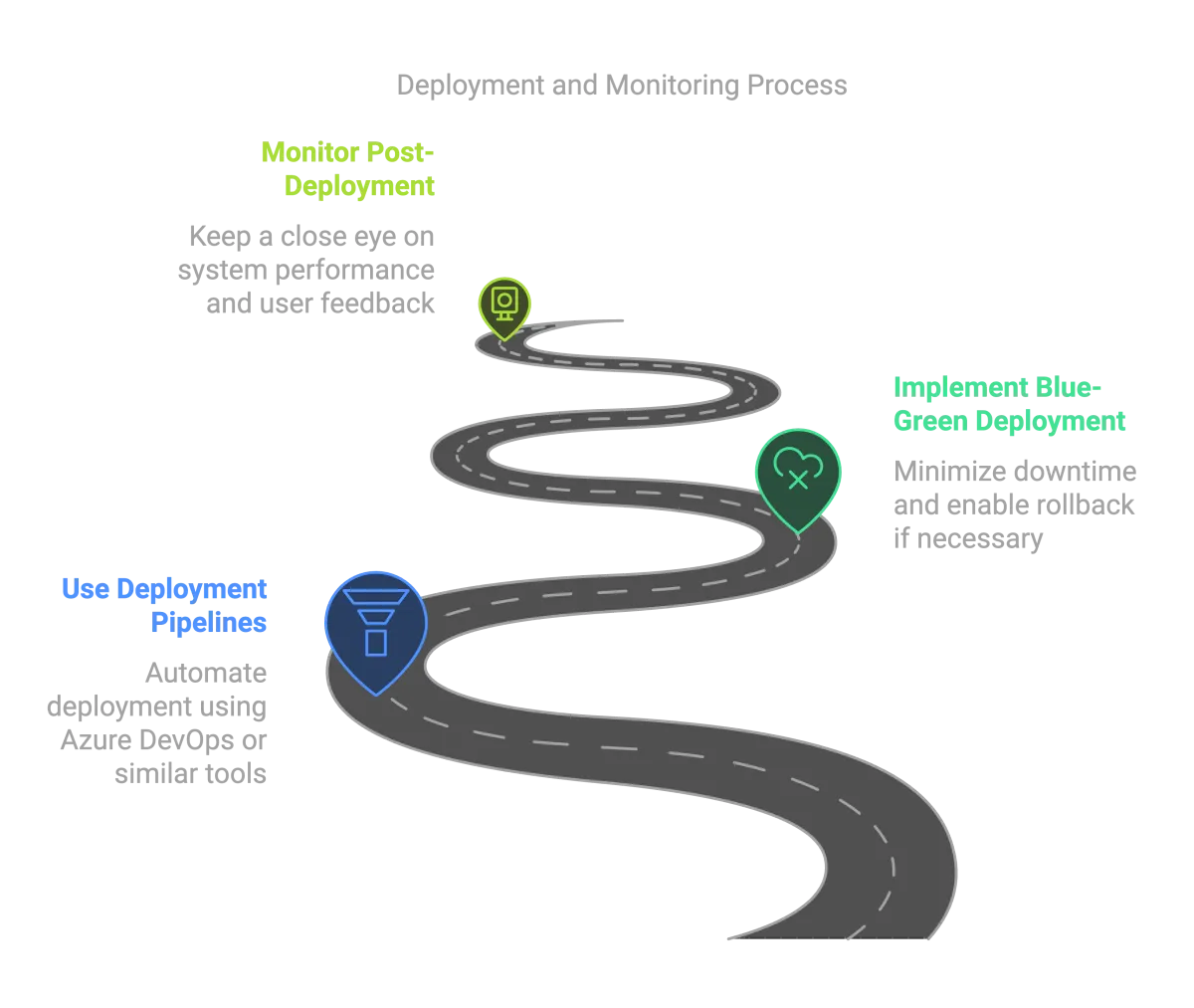Implementing an Event-Driven Architecture (EDA) on Azure can significantly enhance your application’s responsiveness and scalability. For technical managers looking to guide their teams through this process, a clear, step-by-step approach is essential.
This article provides a comprehensive guide to implementing EDA on Azure, outlining each stage and offering insights to ensure a successful deployment.
Overview of Event-Driven Architecture on Azure
Before diving into the implementation steps, it’s important to understand how EDA functions within the Azure ecosystem.

- Event Producers: Applications or services that generate events.
- Event Consumers: Services that process events.
- Event Brokers: Azure services like Event Grid, Service Bus, or Event Hubs that handle event distribution.
Azure provides robust tools and services to facilitate each of these components, enabling the creation of efficient and scalable event-driven systems.
Step 1: Define Your Architecture Requirements
Begin by clearly outlining what you aim to achieve with your EDA implementation.
- Identify Event Sources: Determine what events your system will produce.
- Define Event Consumers: Specify which services will consume and process these events.
- Set Performance Goals: Establish metrics for scalability, latency, and throughput.

A well-defined plan sets the foundation for a successful implementation. Engage your team in this phase to ensure all requirements are captured.
Step 2: Choose the Appropriate Azure Services

Select the Azure services that best fit your architecture requirements.
- Azure Event Grid: Ideal for simple event routing with low latency.
- Azure Service Bus: Suited for complex messaging scenarios requiring advanced features.
- Azure Event Hubs: Best for high-throughput data streaming and ingestion.
Consider factors like event volume, messaging patterns, and integration needs when making your selection.
Choosing the right services ensures your architecture is aligned with your application’s demands and can scale effectively.
Step 3: Set Up Your Azure Environment
Prepare your Azure environment to support your EDA implementation.

- Create Resource Groups: Organize your resources logically.
- Configure Networking: Set up Virtual Networks and Subnets if necessary.
- Manage Access Control: Use Azure Active Directory for authentication and authorization.
Ensure that your environment adheres to your organization’s security and compliance policies.
Step 4: Develop Event Producers

Implement the components that will generate events.
- Integrate SDKs: Use Azure SDKs for your preferred programming languages.
- Implement Event Publishing: Code your applications to send events to the chosen Azure service.
- Handle Exceptions: Include error handling to manage failures gracefully.
Effective event producers are critical for reliable event flow. Ensure your developers follow best practices for stability and performance.
Step 5: Configure Event Brokers

Set up the Azure service that will handle event distribution.
- Create Topics or Event Hubs: Depending on the service selected.
- Define Subscriptions: Specify which consumers will receive certain events.
- Implement Filters: Use filters to route events selectively if needed.
Step 6: Develop Event Consumers
Build the services that will process the events.

- Use Azure Functions: Implement serverless functions for efficient event handling.
- Implement Logic Apps: For workflow automation without extensive coding.
- Ensure Idempotency: Design consumers to handle duplicate events safely.
Event consumers should be robust and capable of scaling to meet demand. Testing is crucial to validate their performance under load.
Step 7: Implement Monitoring and Logging
Set up monitoring to maintain visibility into your system’s performance.

- Use Azure Monitor: Track metrics like event throughput and latency.
- Implement Application Insights: For detailed telemetry and diagnostics.
- Set Up Alerts: Configure alerts for critical thresholds to enable proactive management.
Step 8: Test the Entire System

Perform comprehensive testing before moving to production.
- Unit Testing: Validate individual components.
- Integration Testing: Ensure components work together seamlessly.
- Load Testing: Assess how the system performs under expected and peak loads.
Thorough testing helps identify and resolve issues early, reducing the risk of problems in production.
Step 9: Deploy to Production
With testing complete, proceed to deploy your system.

- Use Deployment Pipelines: Automate deployment with Azure DevOps or similar tools.
- Implement Blue-Green Deployment: Minimize downtime and enable rollback if necessary.
- Monitor Post-Deployment: Keep a close eye on system performance and user feedback.
Step 10: Optimize and Iterate

Post-deployment, focus on continuous improvement.
- Review Performance Metrics: Identify areas for enhancement.
- Gather Feedback: Engage with stakeholders to understand their experiences.
- Implement Updates: Make iterative improvements to refine the system.
Continuous optimization ensures your architecture remains efficient and effective as requirements evolve.
Enhancing Your Team with Synergy Sparq’s Developers
Implementing EDA on Azure is a complex task that benefits from specialized expertise. Synergy Sparq provides skilled Azure developers who can join your team, bringing valuable knowledge and experience.
- Expert Guidance: Our developers have hands-on experience with Azure’s event-driven services.
- Seamless Team Integration: They collaborate closely with your team, adopting your workflows.
- Accelerated Implementation: With their expertise, projects progress more efficiently.
By integrating developers from Synergy Sparq, you enhance your team’s capabilities, ensuring a successful EDA implementation.
Conclusion
Implementing an Event-Driven Architecture on Azure involves careful planning and execution across multiple stages. By following this step-by-step guide, technical managers can lead their teams through the process effectively.
Partnering with Synergy Sparq can further enhance your team’s capabilities, providing the specialized expertise needed to navigate complexities and optimize your architecture.
Next Steps
If you’re ready to implement Event-Driven Architecture on Azure, consider augmenting your team with developers from Synergy Sparq. Contact us to learn how we can support your goals.





